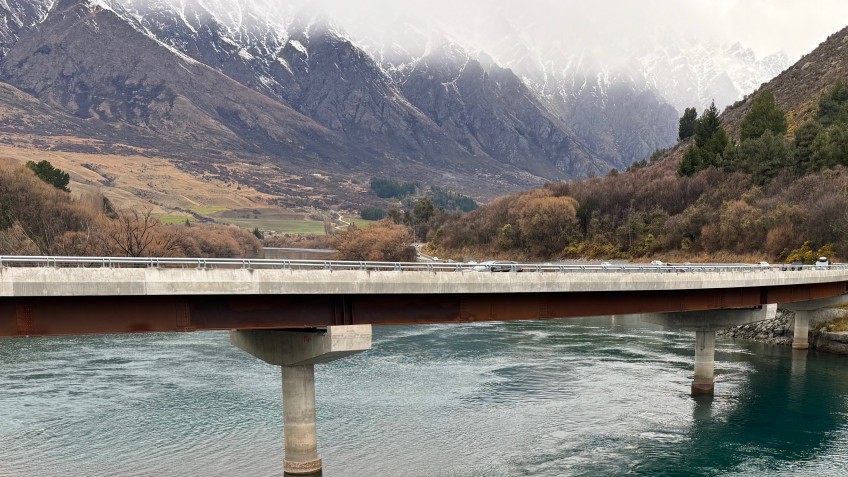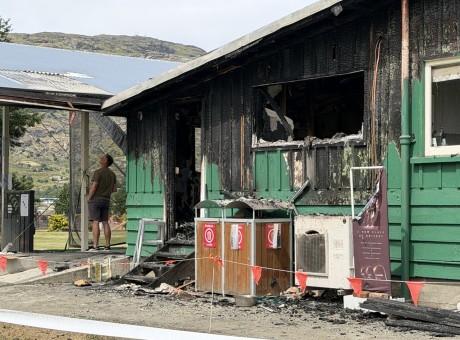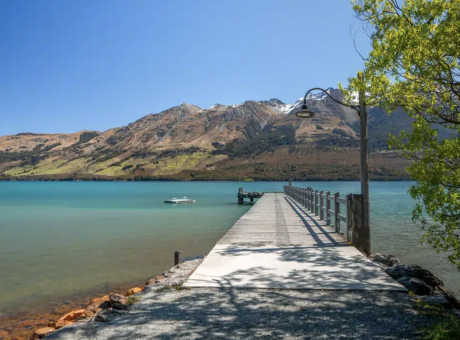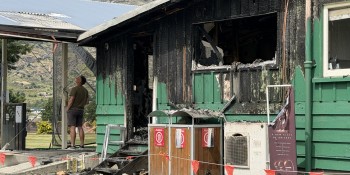Prepare for gridlock as Kawarau Falls Bridge heads for capacity

Queenstown's southern corridor is flagged for growth, but the one road in and out of Frankton is rapidly reaching capacity.
The two-lane Kawarau Falls Bridge can take 1,500 vehicles per lane per hour - and currently peak demand into Frankton is already at 1,200 vehicles.
Another 300 vehicles, and the bridge reaches its limit, a little more than six years after it officially opened, in May 2018.
The news is being delivered to members of the Queenstown Lakes District Council's Planning and Strategy Committee for discussion at a meeting on Thursday.
In a report ahead of the meeting, QLDC strategic growth manager Anita Vanstone warns the bridge is unlikely to be able to accommodate demand generated by existing zoned development.
Her estimate, between 600 and 900 extra residential units occupied south of the bridge will provide those last 300 vehicles.
And there are plenty of new dwellings being built right now, as well as development revving up at the Remarkables Ski Area and further down the road in Kingston.
While a second bridge crossing is being investigated, Ms Vanstone says there are "significant concerns about what this would do to the rest of the network, the financial implications, geotechnical concerns and the overall capacities this will unlock".
'Suboptimal outcome for our community'
Ms Vanstone flags another curveball in her report.
She thinks it is very likely some of the developers in the southern corridor will have applied for their projects to be considered under the government's Fast Track Approvals Bill.
"This process has the potential to achieve a suboptimal outcome for our community," she says in her report.
"The area is not infrastructure ready and there are significant transport issues that need to be worked through collectively."
She recommends a plan be "progressed at pace", with developers, the Otago Regional Council and the New Zealand Transport Agency all working alongside the council on it.
Hour-long commute to town
The report indicates motorists across the entire Whakatipu Basin are heading towards gridlock.
Ms Vanstone says the roading network is at capacity and struggling to cater for current demand, resulting in longer and more variable travel times - affecting private vehicles and buses.
Transport modelling shows average conditions on State Highway 6A will be similar to current peak travel times, while peak periods will regularly experience gridlock, with travel times from the town centre to the southern corridor and Ladies Mile will be more than an hour, compared to 15 to 20 minutes currently, she says.
Public transport case 'highly optimistic'
The report also brings into question some key assumptions of the Public Transport Business Case endorsed by both the district and regional councils just months ago.
The Kawarau Falls Bridge could continue to operate below capacity into the future, but only based on a seemingly unrealistic number of people opting to ditch private vehicles in favour of buses, bikes, or other transport modes.
Ms Vanstone says the business case is based on an assumption of 49 to 53 percent public transport mode share - a "remarkable" level for any urban area bus network.
It is her view ferries, likely to move 200 or so people per hour, are also not feasible and are "unlikely to make a significant difference".
Meanwhile, up to 10 percent active transport - another assumption in the business case - is "highly optimistic due to factors including indirect routes, distance, and weather conditions", she says.
Plus, it is unclear if the long-promised A7 active transport route, a more direct link for cyclists and pedestrians between Frankton and southern neighbourhoods, remains a funding priority as NZTA lays out this week its spending plan for the next three years, with a move away from cycle trails - Crux has asked this question of the transport agency.
Members of the committee are being asked to "note" the report at Thursday's meeting.
They are told a workshop attended by various stakeholders on the topic was held at the start of May - minutes of which are included alongside the report.
Find the full report on the council's workshops, meetings and agendas page here.

























